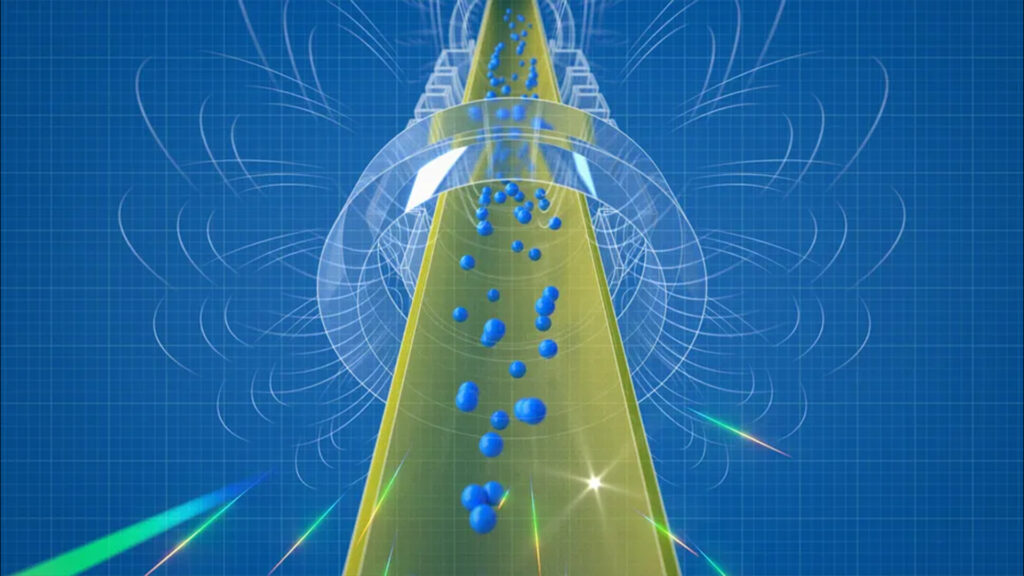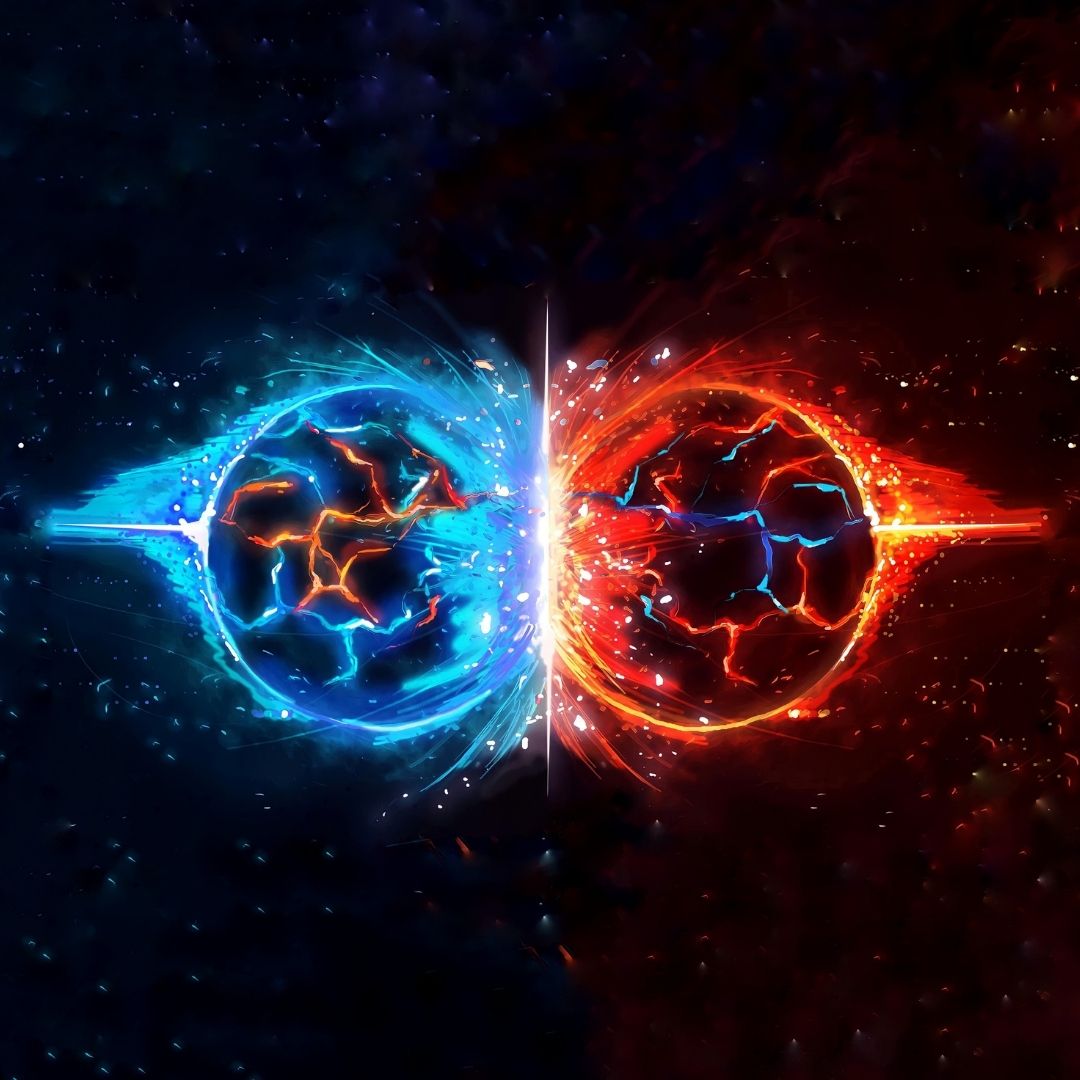For the first time, these discoveries provide unambiguous proof that antigravity does not exist.

On Wednesday (Sept. 27) morning, a global crew of physicists mentioned a primary locating approximately an elusive form of matter called antimatter. It seems that antimatter responds to gravity the equal manner regular matter does.
This end result marks the primary-ever direct commentary of free-falling antimatter, in which atoms are made of antiprotons in preference to protons and antielectrons (positrons) as opposed to electrons. Antiprotons are essentially negatively charged protons (protons are positive in ordinary matter atoms) and positrons are positively charged electrons (electrons are negative in normal matter atoms). Yeah, it’s bizarre.
Greater mainly to the latest story, the team’s feat in the long run proved that atomic antihydrogen specially — made up of one antiproton within the center with an undoubtedly charged positron orbiting around it — is pulled downward due to gravity in place of upward like you may expect with a form of matter that presents because the “opposite” of regular matter, which, as we realize, falls downward with gravity as properly.
Furthermore, near to three decades after antihydrogen was first created in a lab, modern day clinical triumph is yet some other confirmation of Einstein’s general theory of relativity, which predicts that all masses, no matter differences in their internal systems, react to gravity in a comparable manner.
“If you walk down the halls of this department and ask the physicists, they would all say that this result is not the least bit surprising. It really is the fact,” Jonathan Wurtele, a physics professor on the university of California at Berkeley who first proposed the test over a decade in the past and a co-author of the new examine, said in an assertion. However, the majority of them will also assert that the trial was necessary since nothing is certain.
Catching the miniscule – Antimatter
At the European Center for Nuclear Research, well known by its French abbreviation CERN, Wurtele and his colleagues generated, confined, and investigated antihydrogen particles. The particles had been trapped inside what became essentially a magnetic bottle, both ends of which contained controllable magnetic fields. To witness the results of gravity, that’s the weakest of the four regarded forces, at the antihydrogen particles, researchers decreased the magnetic field strength at each end to permit the particles break out.
When every particle wandered to the pinnacle or bottom of the magnetic bottle, it zapped in a flash. Researchers then counted the ones flashes and discovered a higher number wandered to the bottom of the bottle as compared to the top. An amazing 80% of them behaved in one of this way, in truth, and this end result held real for a dozen repeats of the test. According to the brand new examine, that conclusively demonstrated that gravity reasons the antihydrogen to fall downward.
Joel Fajans, a physics professor at UC Berkeley and a co-author of the new study, said in a statement: “This gives us a powerful experimental knob that basically allows us to believe the experiment actually worked because we can prove to ourselves that we can control the experiment in a predictable manner.”
The research team also discovered that antihydrogen’s gravitational acceleration was nearly equal to that of regular matter, or 9.8 meters (32 feet) per second squared. That result is predicted to maintain authentic for different antimatter particles too, researchers say.
“It would be doubly unexpected if this wasn’t true (first, that something fell up, and 2nd that there was a difference with antihydrogen),” Fajans told.
But even though the modern findings rule out theories that posit antimatter is repelled by means of gravity, only greater specific measurements will tell if there may be any distinction inside the gravitational force on antimatter in comparison to normal matter.
Though, by accomplishing the primary direct observation of gravitational outcomes on antihydrogen, researchers mark the beginning of designated and direct pursuit of the gravitational nature of antimatter, which stays puzzlingly scarce in the universe.
If matter and antimatter act so similarly, where’s the universe’s lacking antimatter?
That is still an open question.
In the course of the big bang, the universe is thought to had been rich with pairs of matter and antimatter particles, with the latter taken into consideration matter reflect as its particle recreation the same mass except for an opposite electric charge. If be matter and antimatter particles come into touch, they wipe out each other in a violent flash that leaves in the back of pure energy, so matter and antimatter particles are continually created and destroyed in pairs.
In theory, which means the universe must function nothing however leftover energy, as a minimum consistent with the same old model of particle physics that outlines our cutting-edge high-quality know-how of ways fundamental particles behave underneath the ones four aforementioned forces. But that symmetry was broken down someday in the course of the evolution of the universe such that we clearly see matter dominating the observable universe. That is sincerely beyond what the standard model can provide an explanation for. Accordingly, the processes that tipped the scales such that so little antimatter turned into left at the back of remain but unknown.
“Lamentably seeing that our answers are constant with general relativity, they do no longer shine any mild at the shortage of antimatter,” Fajans instructed. Fajans delivered that he anticipates the precision of the contemporary experiment may be improved by using a factor of 100 inside the destiny. We are unsure of whether this will result in anything new at this time, although it might lead to anything new. Although the majority would think it is doubtful, it is still worth investigating.
The results were released on Wednesday, September 27, in the journal Nature by the Antihydrogen Laser Physics Apparatus (ALPHA) project at CERN.
Read more: https://heavenofphysics.com/square-kilometer-array-radio-telescope/


1 thought on “Antimatter falls down, not up: CERN experiment confirms theory”